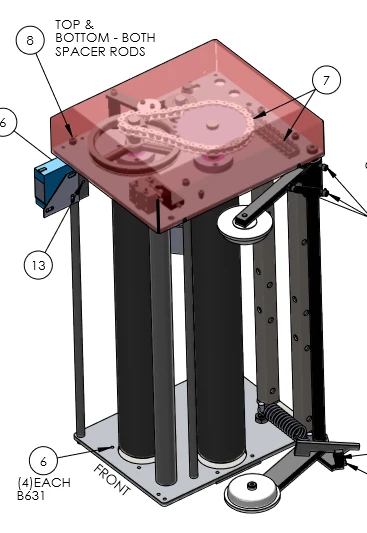At Nitech IPM, we get asked a lot about what makes our film systems different — and one of the biggest performance factors comes down to pre-stretch.
Pre-stretch is exactly what it sounds like: the process of stretching film before it’s applied to a pallet. The film passes through two rollers — the second turning faster than the first — which mechanically elongates the film under controlled tension. That’s where the magic happens.
When done right, pre-stretch makes every wrap stronger, tighter, and more cost-efficient.
1. Stronger Film, Tighter Loads
As the film stretches, its tensile strength increases — in some cases doubling before it even touches the load. This higher strength means better containment and more consistent load stability during transit.
Because our systems apply pre-stretch mechanically (not through simple braking), the stretch is uniform across every wrap. The result: repeatable performance, load after load.
2. Film Memory: The Secret to Load Security
Pre-stretching also creates something we call film memory — the film’s natural tendency to tighten slightly after it’s applied.
That memory acts like an elastic band, keeping loads secure even when products settle or shift during shipment. It’s one of the biggest reasons stretch film works better than strapping, shrink film, or netting.
At Nitech IPM, we calibrate our film delivery systems to preserve that perfect balance — tight enough for hold, flexible enough to protect.
3. Less Film, Lower Costs
Pre-stretch isn’t just about performance — it’s about efficiency. When you stretch film correctly before it hits the load, you use less material to get the same hold strength.
Compared to hand wrapping, customers often cut film usage by 30–50%. That translates into a fast return on investment — many of our customers see payback on new equipment in under a year.
Our programmable systems let operators dial in exactly how much film to use, keeping control of both wrap quality and material costs.
4. Controlled Stretch for Consistent Results
Machines that rely on tension alone (called post-stretch) can’t deliver the same consistency. The film stretches unevenly — tighter on corners, looser in the middle — which can cause crushed boxes or unstable pallets.
Pre-stretch, on the other hand, happens between the carriage rollers where it’s controlled and repeatable. That’s why Nitech IPM stretch wrappers are engineered to maximize pre-stretch while minimizing unnecessary film tension.
Bottom Line
Pre-stretch technology is one of the quiet advantages that separates an ordinary wrapper from a great one.
It means stronger wraps, fewer film breaks, and tighter control over cost — all built into the way Nitech IPM machines are designed.
If your current wrapper isn’t taking full advantage of pre-stretch, you might be spending more on film than you realize.

